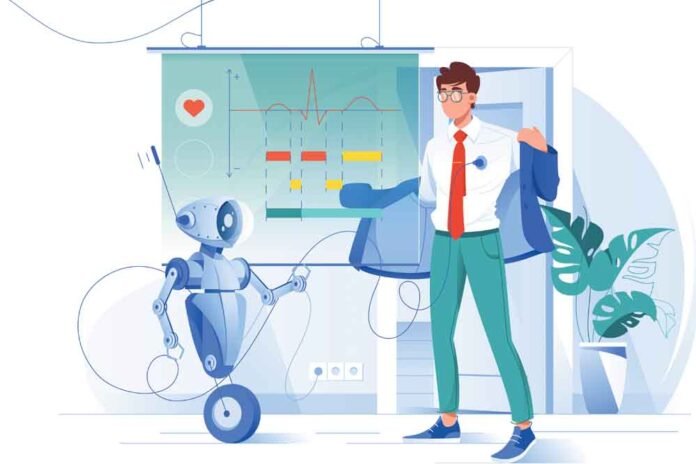Future fashion design possibly would blend the prowess of creative directors with the power of generative artificial intelligence (AI). It will help bring clothes and accessories to market faster, sell them efficiently, and improve the customer experience.
The fashion industry has already adopted basic AI and other frontier technologies. In the next three to five years, generative AI could add $150 billion, conservatively, and up to $275 billion to the apparel, fashion, and luxury sectors’ operating profits, according to McKinsey analysis.
Within product innovation, marketing, and sales and the customer experience in particular, the technology can have significant outcomes and may be more feasible to implement in the short term compared with other areas in the fashion value chain. AI is not just automation—it’s about augmentation and acceleration. That means giving fashion professionals and creatives the technological tools to do certain tasks dramatically faster, freeing them up to spend more of their time doing things that only humans can do. It also means creating systems to serve customers better.
Fashion companies can use the technology to help create better-selling designs, reduce marketing costs, hyperpersonalize customer communications, and speed up processes. It may also reshape supply chain and logistics, store operations, and organization and support functions.
Instead of relying on trend reports and market analysis alone to inform designs for next season’s collection, both mass-market fashion retailers and luxury brands’ creative directors can use generative AI to analyze in real time various types of unstructured data.
A group of Hong Kong–based fashion designers from the Laboratory for Artificial Intelligence in Design (AiDLab) held a fashion show featuring generative-AI-supported designs. Using tools from tech companies such as Cala, Designovel, and Fashable, fashion designers are already tapping into the power of generative AI to spark new ideas, try myriad design variations without having to produce expensive samples, and vastly accelerate their processes.
Marketing
Marketing executives and agencies can use generative AI to brainstorm campaign strategies, product campaign content, and even virtual avatars for every marketing channel—and do it fast. Generative AI could also be applied to personalized customer communications. Companies that excel at personalization increase revenues by 40 percent compared with companies that don’t leverage personalization, according to McKinsey research.
These tools are most helpful when applied to lower-funnel marketing channels (those that are mostly used to encourage sales conversions) as opposed to more prestigious brand-building communications. Marketers are still required to prompt and edit the work.
Sales and consumer experience
Today, there are services that assign a generative AI “representative” to a brand to handle customer service queries across email, chat, text, and a brand’s own platforms. These services help to reduce customers.
Generative-AI-powered tools can keep the conversation going or make styling recommendations after a shopper leaves the store, coach sales associates on how to engage with customers, personalize communications for specific customers, and analyze consumer profiles and online real-time interaction.
Virtual try-on are yet another example of how generative AI can improve sales and consumer experience. Paris-based Veesual enables virtual try-on integration for e-commerce fashion brands, meaning customers can choose their model and pick clothes to try on.
How to get started
Executives can start thinking now about how their businesses could use generative AI. There are a few steps leaders can take to begin.
Make value your North Star
Fashion leaders should outline where generative AI can offer the greatest value to their business. Start by noting which areas—creative design, merchandising, runway campaigns, or clienteling—could benefit the most from generative AI.
Once the value is identified, use cases should also be prioritized according to how feasible they are to implement; determining how seamlessly generative AI can be used will depend on things like a team’s technical skills. Afterward, teams should build a short-term road map to test and validate these use cases.
It may be tempting to have a bit of fun with generative AI, but harnessing its power will take extra diligence. Fashion executives must be intentional in building tools that can deliver value rather than experiment with existing tools indiscriminately.
Know risks and plan to mitigate them
Designers are sometimes criticized for creating derivative works and copycat designs. Determining who owns the intellectual property and creative rights to AI-generated works, which could be based on multimodal data sources such as other designers’ past collections, will be decided on a case-by-case basis until there is a strong legal precedent.
Another risk is bias and fairness in generative-AI systems, particularly around biased data sets, which may present reputational challenges for brands that rely on the technology. There is also the risk that employees who use generative AI are not fully aware of its shortcomings and may fail to check for errors introduced by the technology.
Upskill your current workforce
Generative AI tools could add value to a host of different areas of a business, so it will be important to educate and train employees—including designers, marketers, sales associates, and customer service representatives—on the use of the technology.
With an AI-savvy workforce, the collaboration will take on a new meaning. Leaders should consider: How do we define responsibilities and operate collectively between technical and nontechnical roles?
Fashion businesses will no doubt have to invest in their workforce when it comes to leveraging generative AI, but they won’t have to build out applications or foundation models themselves. Instead, fashion leaders can partner with generative-AI businesses and experts to move quickly.



